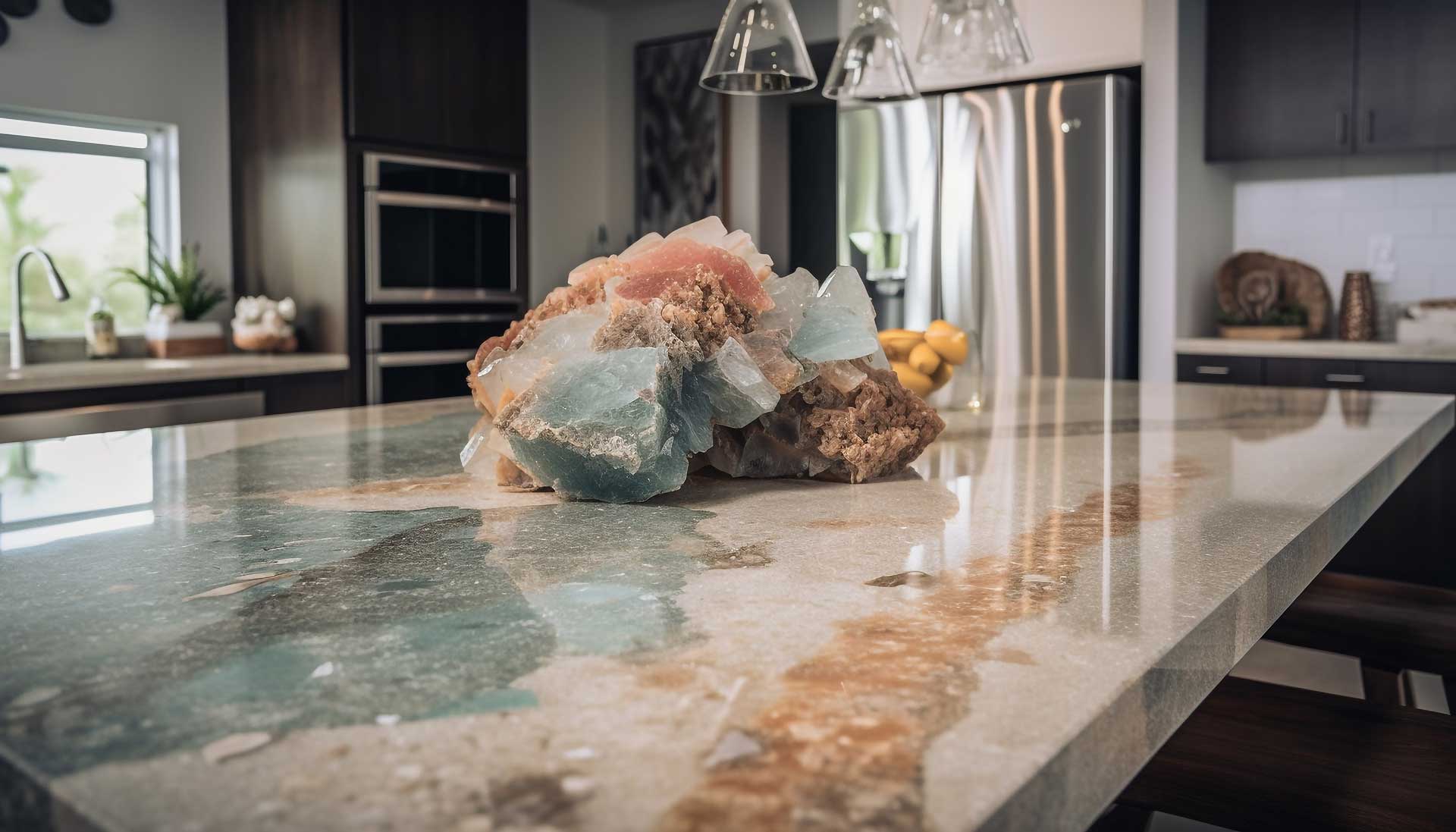
Restore Quartz Countertops like New: Affordable, Sustainable, and Elegant
Why Restoration, Not Replacement?
Considering ripping out your quartz due to dull areas, etch-like marks, or even stubborn stains? Before you go down the path of a disruptive remodel, look to the smarter route: professional restoration to restore the factory shine. It’s quicker, cleaner, and cost-effective to Restore Quartz Countertop surfaces correctly. This handbook demystifies what Quartz Countertop Restoration is all about, the achievable results to anticipate from Restoring Quartz Countertops, and precisely How To Restore Quartz Countertop finishes to a like-new gloss, accomplished with little mess and high return.
The Big Payoffs: Cost, Sustainability, and Style
Replacement entails cost for demolition, disposal, new slabs, fabrication, and reinstalling—not to mention potential damage to cabinet or backsplash. Quartz Countertop Restoration, on the other hand, addresses the surface you already adore, usually in a one-time visit with minimal dust and disruption. Experienced technicians who Restore Quartz Countertop projects utilize specialized tools and resins to repair problems and restore the luster, maintaining the sophisticated, seamless look your kitchen or bath was originally built around.
What Professionals Do?
Curious about How To Restore Quartz Countertop Surfaces Step by Step? When Quartz Countertops are being restored, seasoned professionals apply a process unique to engineered stone:
- Comprehensive, pH-balanced cleaning to break down embedded grime and residues from everyday use.
- Non-abrasive resurfacing to reduce micro-scratches and dull traffic areas without damaging the resin binder.
- Accurate chip and pit repair with color-matched, UV-stable resins that flow well with the aggregate.
- Precision polishing via several pads to restore an even, mirror-like finish.
- Optional topical protection where needed to enhance resistance to normal wear and ease maintenance.
Common Quartz Problems We Can Resolve
Quartz is highly resistant, yet accidents do happen. Professional restoration can typically improve:
- Light scuffing and abrasion due to normal use.
- Blurred areas due to overuse or the use of inappropriate cleaning products.
- Minor chips along sink edges and corners.
- Hard water spots that dull the sheen.
- Food or dye transfer stains that have bonded to residues on the surface.
Important Notes About Quartz Chemistry
Engineered quartz is a blend of ground stone and resin. That resin is tough, but it can react to heat and harsh chemicals. Practical takeaways:
- Avoid placing hot pans or small appliances directly on the surface; use trivets to prevent heat discoloration or a “shadowed” spot.
- Avoid oven cleaner, paint thinner, and strong alkaline or chlorine-based products—they haze or dull the binder.
- For regular cleaning, use pH-neutral, stone-and-resin surface cleaners and a soft microfiber cloth.
If in doubt, test first in an out-of-sight location.
Restoration vs. Replacement: A Quick Comparison
- Time: Restoration is typically hours, not days. Replacement means templating, fabrication, and more trades.
- Cost: Renewing typically is a portion of complete replacement—no slab buying, cutting, or extensive demo.
- Sustainability: Not moving material out of place removes landfill input and carbon footprint for quarrying, transport, and fabrication.
- Design Continuity: You keep your cabinetry, backsplash, and cutouts—no doubt about matching finishes or redoing surrounding pieces.
What “Like-New” Truly Entails?
The correct procedure can enhance clarity and reflectivity, reduce the appearance of fine scratches, and make chips or small pits essentially invisible. Severe burn marks, heavy mechanical wear, or extreme chemical attacks are unlikely to go away completely, but skilled technicians will have realistic expectations and demonstrate what’s possible before they start. The objective is a look that appears newly refreshed, even-toned, and classy under ordinary lighting—so counters “appear new” to the eye, rather than beginning from scratch.
Tips for Maintenance so the Shine is Maintained
- Clean up spills immediately, particularly coffee, tea, wine, and turmeric-laden meals.
- Daily clean with a pH-neutral spray; save gentle cream cleaners for as-needed touch-ups.
- Use cutting boards to safeguard both your knives and the surface.
- Dry following cleaning to avoid mineral spots from hard water.
In sunny, sunlit areas, plain window treatments can minimally reduce long-term UV-related resin fade.
Ideal for Kitchens, Baths, and Beyond
From kitchen counters of family homes to busy powder rooms and laundry tops, renewed quartz glows clean and shiny without the disruption of renovation. It’s a savvy upgrade when selling a home, renting it out, or hosting extended guests; minor imperfections diminish, overall shine is restored, and the room appears brighter and more sophisticated.
How do We Prepare Your Space?
Responsible pros protect floors and adjacent surfaces, use dust-controlled tools, and isolate the work zone to keep your home clean. Sinks, faucets, and appliances are masked as needed, and ventilation is considered during polishing and curing. When the last pad passes and repairs are set, your counters are wiped, detailed, and ready for everyday living.
Signs It’s Time to Call
- You see dull patches that don’t respond to regular cleaning.
- Chips or hairline cracks catch your fingernail.
- The surface scatters light unevenly—gloss in one spot, haze in another.
- You’ve attempted do-it-yourself repairs with little or no success.
Your Elegant, Affordable, Sustainable Next Step
Restoration allows you to maintain the appearance you adore while saving money, time, and the planet. If your quartz has lost its luster, a professional touch can restore depth, clarity, and that sleek, reflective finish you recall—without demolition.
Schedule a Friendly, Pressure-Free Consultation
Need a custom plan and clear prices? Ask us to come on-site for an evaluation and a written description of what we’ll do.
Quick Answers to Common Questions
Is sealing necessary for quartz? No, it’s not porous, so normal sealers don’t get absorbed. In certain situations, professionals might apply a surface protector to facilitate cleaning.
Will restoration affect the color or design? No. It polishes the finish and corrects imperfections; your original color and aggregate are still there, clearer and more consistent.
